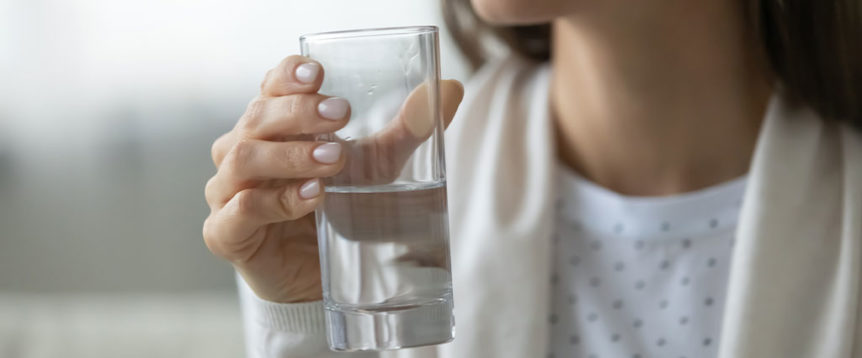We typically equate dieting to weight loss. But not all diets are intended to just shed pounds. There are also regimens specifically designed to clean up our eating habits and address our body’s exposure to environmental pollutants. Detoxification is one such diet. If you’re feeling fatigued or achy, have chronic constipation or experience multiple allergies, you might consider a detox diet.
“Detoxification is part avoidance and part elimination. It’s avoiding things we’re getting exposed to and eliminating toxins we have stored in our body,” says Mary Shackelton, M.P.H., N.D., founder of Holistica Integrative Care in Boulder, Colo.
Detox vs. Cleanse vs. Fast
A detox diet focuses on healing the five main pathways the body uses to excrete toxins—through the bowels, kidneys, lymph system, skin and liver. Toxins can come from food, the air we breathe and our work environment. They include chemicals and pollutants such as pesticides, plastics, secondhand smoke, radon, heavy metals, alcohol or even over-the-counter medications like acetaminophen.
“Getting all of those pathways optimized equals detoxification,” Shackelton says. This, she explains, is different from a cleanse or a fast. A cleanse, for instance, is more like a temporary removal of something, such as the elimination of alcohol, caffeine or sugar. And fasting is complete abstinence from food.
“It gives your organs a rest and a break, but your body has phases of detoxification that require high-quality protein and nutrients. So, when you fast, the withdrawal of micro- and macronutrients stops the detoxification process,” she explains.
Detoxification is not one-size-fits-all, though. The approach a person takes to a detox should depend on genetics, as well as the quantity and quality of exposure to toxins. Conditions such as an autoimmune disease, cancer or another chronic illness are also factors to consider.
When asked how long someone should detoxify, Shackelton’s answer is also a question: “How long is a piece of string? It depends on the goal,” she explains. “Are you fighting cancer or doing a heavy-metal detoxification? Or you might just need to remove bad influences through a detox and then do a cleanse to start again.” For this reason, Shackelton recommends consulting a health expert to best understand how to approach a detox diet that meets your personal needs.
Consume High-Quality Plants and Proteins
There are a variety of detox regimens, but one of the most common is to start by detoxing the liver, which in turn affects the other pathways. There are two phases of liver detoxification. Phase one is about oxidizing toxins to break them down to be more water soluble, so they can more easily move through and out of the body in phase two. Eating a healthy diet is a key part of this, consuming high-quality protein sources and phytonutrients—nutrients from plants—including polyphenols, flavonoids and antioxidants.
“I always go back to the healthiest diet you can find, including seven to nine servings of fruits and vegetables a day,” Shackelton says. “If you have those, you have all of the nutrients and the fiber and the things that support a healthy microbiome, which also supports good detox.”
Phase two aims to neutralize these broken-down toxins through a process called conjugation, when the toxins bind to “conjugates” such as amino acids, glutathione or sulfur (found in garlic, eggs and cruciferous vegetables, for instance) to make them less harmful as they move through the body. Enzymes help with this, too. During conjugation, these remnant toxins are filtered through the kidneys to be removed through urine or through the liver and bile that goes into the small intestine and is later removed through stool.
“Excretion is the goal of detoxification and is a coordinated process that requires a healthy diet with dense nutrients,” Shackelton says.
Hydration Is Key
In addition to eating a nutrient-rich diet, hydration is vital to flush toxins out of the body and detoxify. Noting that kidney function declines with age because of toxic exposure, Shackelton says one way to not struggle with excreting toxins is to stay hydrated.
“A really nutrient-dense diet is number one, because it drives the two phases of detoxification in the liver. And then lots of water is number two,” she says. Yet with that, Shackelton cautions that it’s OK to do a detox diet just to “spring clean” your body, but if you feel you are extremely toxic, it’s best to consult with a health care expert before taking on a detox on your own.
If phases one and two of a detox are not managed properly, Shackelton says, you can end up worse off than when you started. This happens when toxins are broken down, but a person fails to move them quickly through the body to the point of excretion.
“If someone is extremely toxic and they start to detox and they don’t have the proper plan in place, they can become ill,” she explains. “Toxins are stored in fat, and as they are liberated, their pathways have to be upregulated so people don’t get sicker. For instance, if you have a lot of mercury in your body from fish or dental work, if you let it out and it doesn’t get shuttled out of the body, it will get reabsorbed,” she explains. Detoxification for heavy metals, she notes, requires guidance or medical supervision.
Ultimately, the benefits of detoxification can be losing weight, gaining more energy, building a strong immune system, and helping your body and its systems function more efficiently. Once you go through the detox, be mindful that health care specialists, like Shackelton, often suggest taking vitamins and minerals, as well as pre- and probiotics, to rebuild and boost your microbiome and the pathways used for excretion.

